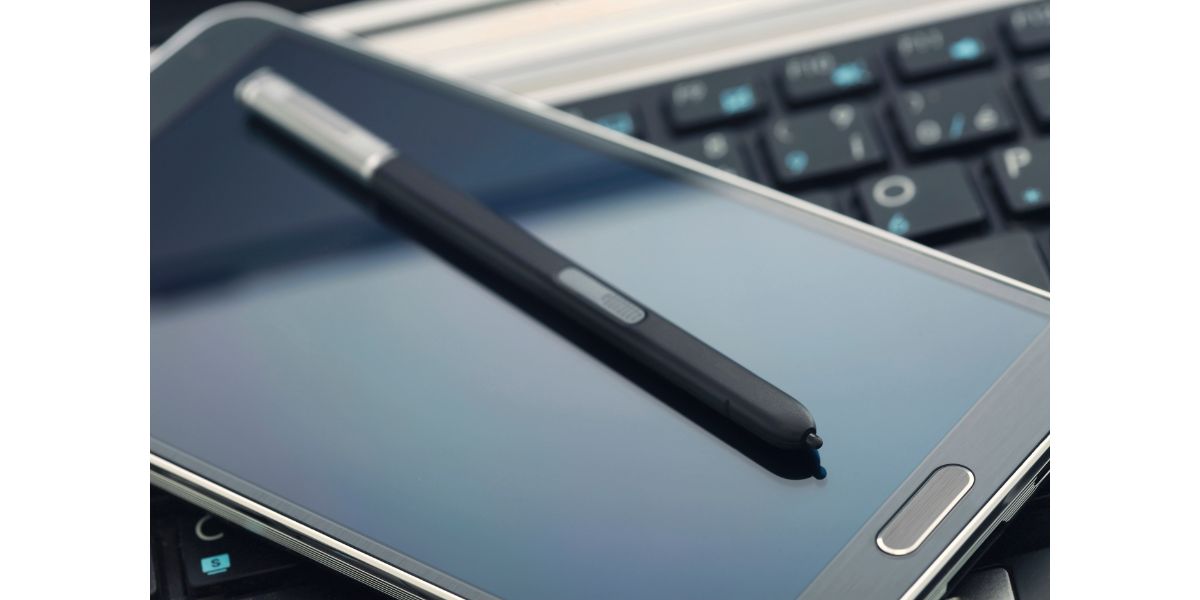Disclaimer: This post may contain affiliate links, meaning we get a small commission if you make a purchase through our links, at no cost to you. For more information, please visit our Disclaimer Page.
Touchscreen technology may be considered relatively new, but it was actually developed back in the 1960s. Nowadays, it’s the basis of every phone, tablet, and touchscreen laptop in existence, becoming an inevitable part of our lives. Have you ever wondered how a touch screen works and why you can only use it with your fingers?
Table of Contents
How Capacitive Touchscreens Work
Almost all the touch screen devices we use today work thanks to capacitive touch screen technology. This technology utilizes the ability of the human body to conduct the electrical current to enable us to control the screen using our fingers.
A capacitive touch screen is made of several layers of glass and plastic; the outer layer of the display contains an additional thin layer made of a conductive material, typically copper or Indium Tin Oxide (ITO). Whenever you turn your device on, the outer layer is charged with electric current. The moment you touch it, your conductor body will allow you to absorb some of the charge, completing the electric circuit.
When you complete the circuit, the electrical charge in the area under your finger changes, registering into your device as a touch event. The device’s operating system responds to this change, which allows you to control and move everything on the screen using your finger.
As you can see, the ability of your finger to conduct electricity enables you to control everything on your screen with a simple touch. Knowing how capacitive touch screens work can help you understand why you can only use your fingers and not much else to control the screen.
Why Can’t You Use Gloves or Another Item To Control Your Phone?
There’s nothing more frustrating than when you’re trying to use your phone in the cold, but your gloves don’t work on your screen. Even trying to control the screen using your nails will be futile. How can this be possible?
Normally, you can’t use gloves, nails, or any other item to control your phone because they are not conductive. Because these materials can’t conduct electricity, they can’t complete the circle and thus create the necessary disturbance to signal the operating system of your device to respond.
As long as you’re using your finger, you can control the screen because your skin cells are made to conduct electricity. Gloves typically are not conductors, even though nowadays you can easily find gloves with a different, conductive material on the tip of their fingers to control touch screens.
Whenever you use something other than your fingers to control your touch screen device, you need to ask yourself if the material can conduct electricity. If it can’t, don’t try to make it work. As long as it can’t create an electrical disturbance, it will be useless to you.
What About Resistive Touch Screens?
There are two types of touch screens, capacitive and resistive. Capacitive touchscreen technology was developed first, but it still remains the best one and is applied in most devices people use nowadays.
Resistive touch screens were developed about a decade after capacitive touch screens. These screens are made of two flexible layers made of plastic and glass with an empty gap between them. The device registers a “touch event” when these two layers touch due to pressure from outside.
As a result, you can use pretty much anything with these screens. As long as you apply enough pressure to signal the device to respond, you can use any pointy item to control it. Resistive screens are less bright and more delicate than capacitive touch screens, which explains why the latter are still more widely used.
Why Doesn’t My Finger Work Well on Touch Screens?
You’re trying to open or control your phone or tablet, and even your finger isn’t working. Having read everything I explained above, you might be confused. Aren’t fingers conductive? Fingers are indeed conductive, but there are a few reasons why it might still be difficult for you to control a capacitive touch screen.
Your finger might not work on a touch screen because you might be touching your screen with multiple fingers or have calluses that prevent your finger from conducting electricity. Additionally, it might be an issue with screen sensitivity rather than with your hands.
The first two situations are commonly called zombie finger scenarios, where your finger is acting as a mere object that can’t control touch screens. When you touch your screen with one finger, but your other fingers are pretty close to the screen, your device may register multiple disturbances, which is confusing, and could cause it not to respond.
The other scenario is when your fingers have calluses. Calluses are thick layers of dead skin cells, which, as you can imagine, are very different from live skin cells in your fingers. Dead cells do not conduct electricity, so they will not close the circuit and signal your device to respond to your touch.
Sometimes the issue is elsewhere; your touch screen might have sensitivity issues that make it harder for you to control. There are several possible factors that can cause this loss of sensitivity. In most cases, simply cleaning the screen of your device may help.
Other Objects You Can Use on a Touch Screen Besides Fingers
Are fingers the only thing that can control touch screens? Technically, any material that can conduct electricity and has a certain shape, surface area, and density can act as a conductor for using a touch screen.
If you can’t use your fingers, you may try buying a capacitive stylus. These styluses can act like your fingers and even allow you to be more accurate for drawings or handwriting. Styluses are widely used on special tablets made for designing and drawing.
In a pinch, you can makeshift a device to help you control your touchscreen using the eraser on the back of a pencil and aluminum foil. The eraser has a similar density and surface area to your finger, but it’s not conductive, which is where the aluminum foil comes in. This method typically works but may damage your screen if you’re not careful.
If you cannot control your touchscreen using your finger or any other device, you should consider accessibility options. These features are made for people who can only control their devices using their voice. By enabling voice commands, you won’t need to touch your screen to control it.
What Happens When I Put a Protective Layer on My Screen?
Considering everything you’ve learned about capacitive screens, you may wonder how your finger still works on your device even after you put a protective layer over the screen. Considering the conductive layer made of copper or ITO is covered, how would the electrical disturbance be created?
Protective screens allow your finger to control the touch screen because they are also made of a conductive material. As a result, your touch can still create a touch event, signaling your device to respond.
If your protective screen makes it harder for you to control your phone, it’s poorly made. It’s better to remove it and replace it with a higher-quality protective screen.
Conclusion
The capacitive touch screens that most devices use nowadays only work with fingers. Because they require an object that conducts electricity to allow the device to respond. Since our cells are electrical conductors, our fingers can control touch screens while other objects can’t.


